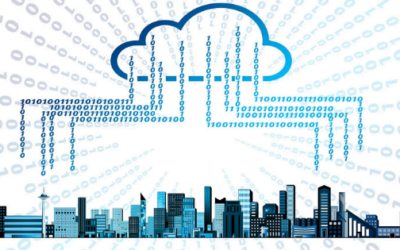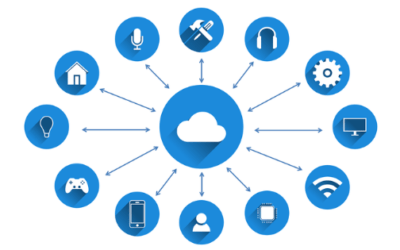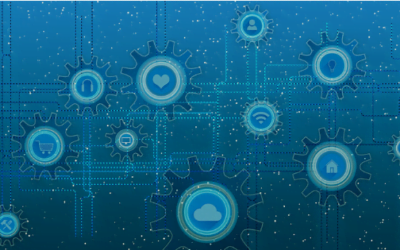Technical Intelligence (TECHINT) is the intelligence about weapons and equipment used by the armed forces of foreign nations. The related term, Scientific and Technical Intelligence (S&TI), is the analysis of a foreign or domestic military platform’s capabilities and vulnerabilities.
S&TI examines foreign developments in basic and applied sciences and technologies with warfare potential, particularly enhancements to weapon systems. It includes Scientific and Technical Intelligence characteristics, capabilities, vulnerabilities, and limitations of weapon systems, subsystems, and associated material, as well as related research and development. Scientific and Technical Intelligence also addresses overall weapon systems, tactics analysis, and equipment effectiveness.
The Advanced Technical Intelligence Center for Human Capital Development (ATIC), is a university and industry-focused research, education, and training nonprofit corporation. It consolidates technical intelligence education and training in the Department of Defense, national agencies, and civilian institutes and industry. The primary mission of the Advanced Technical Intelligence Center is to educate and train a workforce of appropriately cleared government and contractor personnel capable of generating information from technical intelligence systems.
These science and technical intelligence professionals such as Technical Intelligence Analysts and Technical Security Threat Intelligence Officers use their unique technical and scientific knowledge to report on weapons systems and technologies that may pose threats to US forces. It is part of their main task to piece together information from a variety of sources in order to assess threats and prevent attacks from interior and exterior enemies. Their areas of focus are mainly analysis of weapons of mass destruction, emerging technologies, cyber threats, and developmental weapons systems, but it doesn’t end there.
The rapidly evolving technology, production of weapons and weapon systems, and other threats, requires the need to strengthen a more diverse number of organizations to evaluate these new types of danger. Technical Intelligence Analysts and Technical Security Threat Intelligence Officers perform a variety of tasks in order to ensure the safety of America every single day.
Our technology has greatly advanced over the past few years and along with this rise is the increase of ransomware attacks and cyber threats. There were even possible or said creation of weapons of mass destruction in some parts of the world. Such actions do not pose threat to only the U.S. government, but it is a threat to all the citizens of the United States of America and the whole world. Identifying the perpetrators and other information about matters like this is a must.
In finding such important information it requires both advanced attribution capabilities and better intelligence sharing by technically capable functional experts. Scientific and technical analysts and collectors who are highly skilled, educated, trained, and who understand the fundamentals of converging technologies, and their economic implications is what the national security community needs.
Past National Security Strategies have mentioned the importance of science, technology, and innovation – the same as President Donald Trump’s National Security Strategy – , but none of these strategies communicated it in a precise manner. It wasn’t clearly stated how important the role that federal institutions play and the significant barriers impeding full use of talent across federal agencies. There were even issues such as: poor incentives for hiring and retaining science and technical intelligence professionals, slow adjudication of national security clearances, and less than competitive salaries. All of these barriers negatively affect S&TI professionals cadre and their ability to meet their mission requirements. There were even reports that despite the constantly expanding portfolios and requirements, the number of S&TI analysts and collectors in the community has decreased since the Cold War ended.
The National Intelligence Council’s unclassified Global Trends report, is an unclassified strategic assessment of how key trends and uncertainties might shape the world over the next 20 years to help senior U.S. leaders think and plan for the longer term. This includes a forecast of the future developments in worldwide technology development.
Aside from understanding the immediate technical impact of such technological developments, understanding these trends allows estimation of their economic impact. These are the most important aspects for senior policymakers. If the national security enterprise is not able to “attract and retain investors and innovators” and integrate them as or with intelligence officers, – which is what the National Security Strategy proposes -, the consequences will be felt across a wide range of policy areas.
To add, trained science and technical intelligence officers rarely assume the most senior positions within the intelligence community. This hinders their ability to elevate the importance of their mission and provide valuable information to decision-makers.
With the widened and clearer understanding of the importance and roles of scientific and technical intelligence professionals, it is now gaining broader light. As mentioned in the National Security Strategy, “…virtually all modern weapon systems depend upon data derived from scientific and technical intelligence.”
If the government fails to see and give importance to these professionals, they risk under-resourcing the critical personnel who support many of the actions in the new National Security Strategy. Six of the “priority actions” identified in the document will require major support from the S&TI community:
- Detect and Disrupt Weapons of Mass Destruction
- Detect and Contain Biothreats at Their Source
- Counter Cyber Criminals
- Deter and Disrupt Malicious Cyber Actors
- Information Sharing and Sensing
- Understand Worldwide Science and Technology (S&T) Trends.
With all these facts stating the advantages that scientific and technical intelligence professionals can provide, the U.S. intelligence and policy community must realize and acknowledge the importance of their role. They need to adapt to the rapidly changing environment with smarter hiring, better retention practices, and consistent emphasis on effective communication of technical topics.
A large number of National Security Strategy’s priority actions are predicted and will be widely affected by this. Now, it is up to President Donald Trump’s administration to extensively implement the document’s recommendations and to translate its expressed interest in scientific and technical intelligence into reality.
Did you know we offer free consultations for our services? If you’d like to find out how we can serve you, contact us and set up your call with us today!




0 Comments